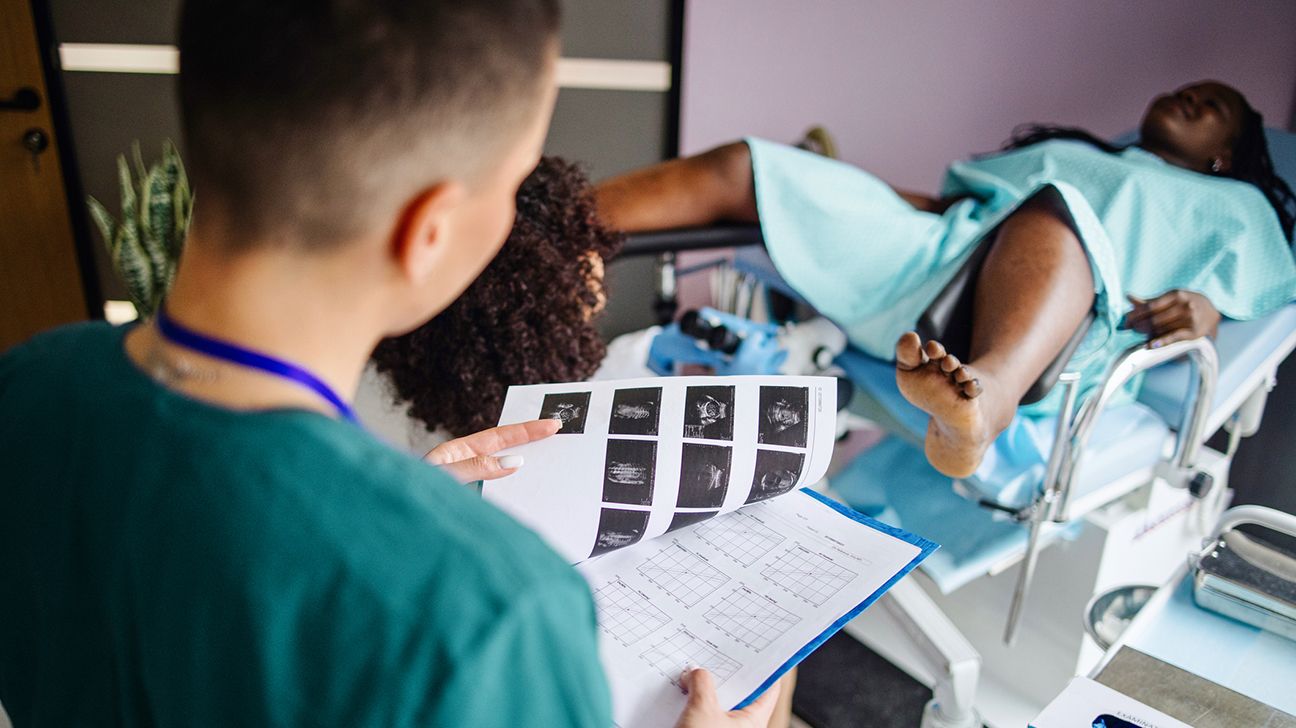The four stages of endometriosis range from mild to severe. The stages reflect the progression of the condition, but they don’t always directly relate to your symptoms or treatment options.

Endometriosis happens when tissue similar to the lining of the uterus grows outside the uterus. This can cause pain, heavy periods, and other symptoms.
To assign a stage, doctors look at how many endometrial growths you have. The more endometriotic disease present, the later the stage.
Still, it’s important to note that the stage of your endometriosis doesn’t necessarily correlate to your symptoms. While you can have significant pain with stage 1, you can also have relatively minor symptoms with stage 4.
Read on to learn more about how endometriosis diagnosis and staging works. We also includes the firsthand experience of Gabby Craig, who reached her own endometriosis diagnosis after seven years.
Endometriosis is classified by stages. They’re based on the amount of endometrial lesions and how extensive they are.
There are four stages: Stage 1 is the most mild, and stage 4 is the most severe.
The American Society of Reproductive Medicine also uses a
In stage 1, you’ll have a few small growths. They’re typically on superficial tissue that lines the pelvis and abdominal cavity or on nearby organs.
There is very little — if any — scar tissue. This type of endometriosis is minimal.
In stage 2, there are more growths.
These growths implant deeper into organs and tissues in the pelvic region than growths found in stage 1 and are often found in the ovaries, fallopian tubes, behind the uterus, or in the surrounding area.
They’re more likely to create scar tissue than stage 1 growths.
This type of endometriosis is usually mild.
If you have stage 3 endometriosis, you’ll have many growths in the pelvic area.
Cysts can grow on one or both ovaries and adhesions are common. These adhesions form scar tissue in response to the inflammation caused by endometriosis.
This scar tissue and inflammation can lead to a variety of symptoms, including severe pain and bleeding.
This type of endometriosis is moderate.
This is the most severe stage of endometriosis. You might have deep growths along with large cysts on one or both ovaries and multiple adhesions.
Growths, cysts, lesions, and resulting scar tissue in this stage can lead to a wide range of symptoms. They can cause pain and digestive symptoms and can obstruct reproductive organs, leading to infertility.
This type of endometriosis is severe.
Gabby’s story: A long road to diagnosis
“At age 17, I started the discussion surrounding the severity of symptoms I experienced with my menstrual cycle. After starting birth control, my pain would continue but the severity of the bleeding was a rollercoaster. I remember bleeding for three weeks, and the only explanation the doctor could provide was that ‘my body was adjusting to the pill.’
The month after I turned 19, I had a 6.7-centimeter cyst removed from my left ovary. This had been my first laparoscopic surgery, and I didn’t know what questions to ask. 13 months later I went in for a second cyst removal. It was then that the doctor explained that he found endometriosis covering both ovaries and my uterus, and they had removed it.”
For many conditions, staging is an important part of treatment planning. But
Endometriosis also doesn’t progress through the stages in predictable ways the way some conditions do, and symptoms don’t necessarily get worse or become more noticeable in more advanced stages.
For example, you could have stage 1 and regularly experience painful symptoms that affect your daily life. You could also have stage 4 and not experience any symptoms at all.
Endometriosis is commonly found when people are trying to conceive but are unable to get pregnant. If you’re trying to conceive and think you may have endometriosis, it’s important to speak with a fertility doctor.
Since endometriosis affects reproductive organs, plans for future childbirth are typically also a factor in treatment planning. It’s also important to seek an early diagnosis in order to avoid potential complications.
Common treatment options include:
- Hormone therapy: Hormone therapies help regulate the hormones that affect endometrial tissues. This can help manage symptoms and pain.
- Pain relievers: Nonsteroidal anti-inflammatory drugs and other pain relievers can help ease endometriosis pain.
- Laparoscopy: A laparoscopy is a minimally invasive surgical procedure done to remove endometriosis tissue and scar tissue.
- Laparotomy: A laparotomy removes endometriosis tissue and scar tissue. But healthcare professionals do this surgery through a large cut in the abdomen.
- Hysterectomy: A hysterectomy surgically removes the uterus. This is a management strategy reserved for extreme cases, and it can also include removing one or both of the ovaries. Read more about hysterectomies.
Gabby’s story: A late diagnosis led to challenging complications
“Six months later, I was once again experiencing severe pain with no relief. The doctor I was seeing had explained to me that there was no way my endometriosis had grown back — after getting yet another second opinion, I went in for my third surgery to then have it removed again.
It was during this surgery that I lost my ovary to cyst and endometriosis complications. After another six months when my pain returned yet again I was referred to a specialist.
Do your own research and fight for yourself. No one knows your body the way you do, and you will be the first to know.”
Read more about endometriosis.
Doctors use a staging system to classify how many endometriosis growths are present and how deep into tissues and organs they are.
There are 4 stages, with 1 being the lowest and 4 being the highest.
Stages don’t always describe symptoms and aren’t the primary factor used to plan treatment. Instead, treatment depends on how much your symptoms are affecting your daily life.
